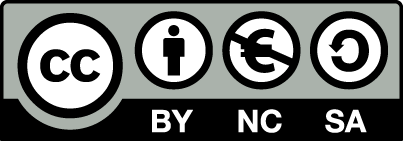Please use this identifier to cite or link to this item:
https://hdl.handle.net/2445/217360Full metadata record
| DC Field | Value | Language |
|---|---|---|
| dc.contributor.author | González Sagredo, Albert | - |
| dc.contributor.author | Carnaval, Thiago | - |
| dc.contributor.author | Cedeño Peralta, Robert Josua | - |
| dc.contributor.author | López García, Paula | - |
| dc.contributor.author | Castellà Durall, Albert | - |
| dc.contributor.author | Callejón Baño, Regina | - |
| dc.contributor.author | Villoria, Jesús | - |
| dc.contributor.author | Videla Ces, Sebastián | - |
| dc.contributor.author | Vila Coll, Ramon | - |
| dc.contributor.author | Iborra Ortega, Elena | - |
| dc.date.accessioned | 2025-01-10T12:52:34Z | - |
| dc.date.available | 2025-01-10T12:52:34Z | - |
| dc.date.issued | 2024-01-01 | - |
| dc.identifier.issn | 1695-2987 | - |
| dc.identifier.uri | https://hdl.handle.net/2445/217360 | - |
| dc.description.abstract | [eng] Surgical site infection is one of the most frightening surgery-related complications. Different drapes have been used as an infection prevention tool, although evidence regarding iodophor-impregnated drapes remains limited. This meta-analysis (PROSPERO- CRD42023391651) aimed to assess if iodophor-impregnated drapes reduced intraoperative contamination, a risk factor for infection. We systematically searched MEDLINE, SCOPUS and Web-of-Science databases for randomized clinical trials comparing the rate of intraoperative contamination with iodophor-impregnated drapes vs no-drape. Primary endpoint was the rate of contaminated swabs at the end of surgery. The meta-analysis was performed using the Mantel-Haenszel method to calculate the common effect estimate, and its random variant to account for inter-study heterogeneity. A total of 4 eligible articles were identified. All were parallel group randomized controlled trials. The inter-study heterogeneity was low (I2 2 = 0 %). Among the 1784 patients included in these 4 trials, 906 (50.8 %) received an iodophor-impregnated drape and 878 (49.2 %) received no drape at all. Among these 1784 patients, a total of 249 (14.0 %) had a contaminated swab at the end of the surgery: 95 (10.5 %) on the iodophor-impregnated drape group and 154 (17.5 %) on the no-drape group (RR, 0.60 [95 % CI, 0.41-0.88], p = 0.02). In conclusion, iodophor-impregnated drapes are associated with lower intraoperative contamination vs non-adhesive drapes. | - |
| dc.description.abstract | [spa] La infección de la herida quirúrgica es una complicación temida en cirugía. Se han usado diferentes adhesivos como herramienta para prevenir infecciones, aunque la evidencia respecto a los impregnados en yodo es limitada. Este metaanálisis (PROSPERO-CRD42023391651) tiene como objetivo determinar si los adhesivos impregnados reducen la contaminación intraoperatoria, un factor de riesgo de infección. Hemos realizado una búsqueda sistemática en Medline, Scopus y Web of Science de ensayos clínicos aleatorizados comparando el porcentaje de contaminación intraoperatoria con los adhesivos impregnados frente a no usarlos. El objetivo primario fue el porcentaje de escobillones contaminados al final de la cirugía. Se utilizó el método Mantel-Haenszel para el efecto común estimado y su versión aleatoria para la heterogeneidad interestudio. Se identificaron cuatro artículos elegibles. La heterogeneidad interestudio fue baja (i2 = 0 %). Entre los 1784 pacien- tes incluidos, 906 (50,8 %) recibieron adhesivo impregnado y 878 (49,2 %) no los recibieron. De estos 1784 pa- cientes, 249 (14,0 %) presentaron escobillón contaminado al final de la cirugía: 95 (10,5 %) en el grupo de adhesivo impregnado y 154 (17,5 %) en el grupo de no adhesivo (RR: 0,60 [iC 95 %: 0,41-0,88], p = 0,02). En conclusión, los adhesivos impregnados en yodo se asocian con una reducción de la contaminación intraope- ratoria respecto a no utilizarlos. | - |
| dc.format.extent | 9 p. | - |
| dc.format.mimetype | application/pdf | - |
| dc.language.iso | spa | - |
| dc.publisher | ARAN Ediciones | - |
| dc.relation.isformatof | Reproducció del document publicat a: https://doi.org/10.20960/angiologia.00643 | - |
| dc.relation.ispartof | Angiología, 2024, vol. 76, num. 5, p. 303-311 | - |
| dc.relation.uri | https://doi.org/10.20960/angiologia.00643 | - |
| dc.rights | cc-by-nc-sa (c) González Sagredo, Albert et al., 2024 | - |
| dc.rights.uri | http://creativecommons.org/licenses/by-nc-sa/3.0/es/ | * |
| dc.source | Articles publicats en revistes (Institut d'lnvestigació Biomèdica de Bellvitge (IDIBELL)) | - |
| dc.subject.classification | Infeccions quirúrgiques | - |
| dc.subject.classification | Iode | - |
| dc.subject.classification | Embenats | - |
| dc.subject.other | Surgical wound infection | - |
| dc.subject.other | Iodine | - |
| dc.subject.other | Bandages and bandaging | - |
| dc.title | Los adhesivos plásticos impregnados en yodo se asocian con una reducción de la contaminación intraoperatoria respecto a no utilizarlos. Revisión sistemática y metaanálisis | - |
| dc.title.alternative | Iodophor-impregnated drapes are associated with lower intraoperative contamination versus non-adhesive drapes. A systematic review and meta-analysis | - |
| dc.type | info:eu-repo/semantics/article | - |
| dc.type | info:eu-repo/semantics/publishedVersion | - |
| dc.date.updated | 2024-11-05T12:09:29Z | - |
| dc.rights.accessRights | info:eu-repo/semantics/openAccess | - |
| Appears in Collections: | Articles publicats en revistes (Institut d'lnvestigació Biomèdica de Bellvitge (IDIBELL)) | |
Files in This Item:
| File | Description | Size | Format | |
|---|---|---|---|---|
| MA-00643-02.pdf | 1.11 MB | Adobe PDF | View/Open |
This item is licensed under a
Creative Commons License



